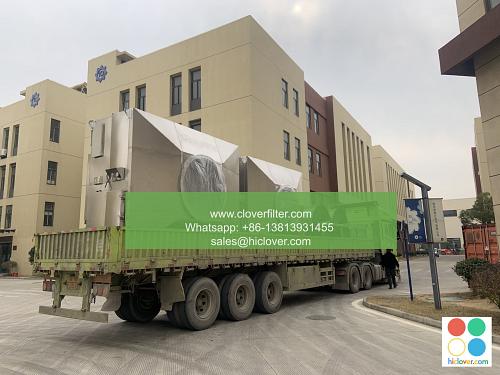Innovative Air Filter Designs for Brewery and Winery Applications

The importance of air quality in brewery and winery settings cannot be overstated, as it directly impacts the quality and consistency of the final product. In recent years, innovative air filter designs have been developed to cater to the specific needs of these industries, providing improved indoor air quality (IAQ), reduced contamination risks, and enhanced product quality. In this article, we will delve into the world of cutting-edge air filtration systems, highlighting various application areas, and exploring the benefits of advanced HEPA filtration, activated carbon filtration, and UV-C technology in brewery and winery settings.
Application Areas: Brewery and Winery Air Filtration Needs
Breweries and wineries have unique air filtration requirements, depending on the specific application area. Some of the key areas where innovative air filter designs are making a significant impact include:
– Fermentation rooms: Where yeast and bacteria can be sensitive to air quality, and HEPA filters can help minimize contamination risks.
– Cellars and aging rooms: Where activated carbon filters can adsorb volatile compounds, preventing spoilage and preserving the quality of the wine or beer.
– Bottling and packaging areas: Where UV-C technology can be used to sanitize surfaces, reducing the risk of contamination and product spoilage.
– Storage facilities: Where climate control systems and air filtration systems work together to maintain optimal temperature and humidity levels, preventing degradation and spoilage of the products.
Key Technologies: HEPA Filtration, Activated Carbon Filtration, and UV-C Technology
Innovative air filter designs for brewery and winery applications often incorporate one or more of the following key technologies:
– HEPA (High Efficiency Particulate Air) filtration: Capable of capturing 99.97% of particles as small as 0.3 microns, HEPA filters are ideal for minimizing contamination risks in fermentation rooms and other sensitive areas.
– Activated carbon filtration: Effective in adsorbing volatile compounds, odors, and gases, activated carbon filters are commonly used in cellars, aging rooms, and storage facilities to preserve product quality.
– UV-C technology: Using ultraviolet light to sanitize surfaces and air, UV-C technology is increasingly being used in bottling and packaging areas, as well as in fermentation rooms, to reduce contamination risks and improve product quality.
Benefits of Innovative Air Filter Designs
The implementation of innovative air filter designs in brewery and winery settings can have numerous benefits, including:
– Improved product quality: By minimizing contamination risks and maintaining optimal air quality, breweries and wineries can produce higher-quality products with greater consistency.
– Reduced energy consumption: Advanced air filtration systems can be designed to work in conjunction with existing climate control systems, reducing energy consumption and minimizing the environmental impact of the facility.
– Increased operational efficiency: With improved air quality and reduced contamination risks, breweries and wineries can optimize their operations, reducing downtime and increasing productivity.
Conclusion
Innovative air filter designs are revolutionizing the way breweries and wineries approach air quality, providing improved IAQ, reduced contamination risks, and enhanced product quality. By understanding the unique application areas and leveraging key technologies such as HEPA filtration, activated carbon filtration, and UV-C technology, breweries and wineries can optimize their operations, improve product quality, and maintain a competitive edge in the market. As the demand for high-quality, consistent products continues to grow, the importance of innovative air filter designs in brewery and winery applications will only continue to increase. You haven’t asked a question or provided any context. Please provide more information or ask a question so I can assist you. I’ll do my best to provide a helpful and direct response. What’s on your mind?

